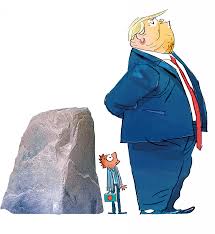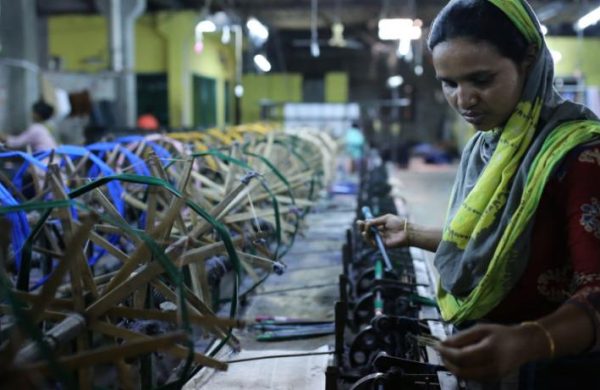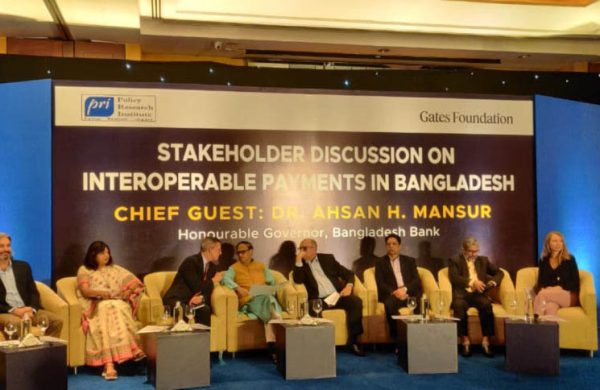Trump tariff dilemma: Caught between a rock and a hard place?
- Update Time : Saturday, July 12, 2025

TDS Desk:
The US President Donald Trump has sent “tariff letters” to 22 countries, as of this writing on July 10, communicating the rates they will face if no deal is made by August 1.
While Bangladesh has at best been sluggish in reducing tariffs and other trade barriers during the 90 day pause of the April 2 tariff, the dragon in the room appears to be in the shadows where Bangladesh is caught between a rock and a hard place.
Trump’s tariff letters are more than just economic tools. They are negotiation levers, geopolitical signals, and domestic optics. Making the three converge in dealing with a player who has credibly committed to unpredictability is no piece of cake.
THE LETTER NOBODY WANTS
The countries receiving the tariff letters face tariff rates ranging between 20 to 50% effective August 1, 2025. With the exception of Brazil, the text of the letters is identical except the name of the country and the tariff rates.
They express concerns about the trade imbalance between the US and the countries the letters are addressed to. The President applauds the country receiving the tariff slap, threatens tit-for-tat if they retaliate or even appear retaliatory going forward, and keeps the recipients guessing at the end saying, “These Tariffs may be modified, upward or downward, depending on our relationship with your Country.”
Bangladesh’s key takeaways from the Letter include a default tariff of 35% on all Bangladeshi exports to the US. If Bangladesh raises its own tariffs, the US will add that increase to the 35%. Goods routed through third countries to evade tariffs will be charged the “higher applicable rate”. Tariffs may be modified upward or downward depending on Bangladesh’s openness to US goods and removal of trade barriers.
Bangladesh continues to face above-average reciprocal tariffs. Its comparative tariff (dis)advantage post-Trump letters are similar in structure to the 2 April pattern, but not identical. On 2 April 2025, Bangladesh’s 37% tariff was behind competitors like India (26%), Pakistan (29%), and Indonesia (32%). Bangladesh’s post-Letter 35% tariff keeps it less competitive against Indonesia (32%) and Sri Lanka (30%) and more competitive than Cambodia (36%), Thailand (36%), Laos (40%) and Myanmar (40%) but not Vietnam (20%) any more, a key competitor. India and Pakistan, not in the letter list yet, are likely to maintain their comparative tariff advantage vis-à-vis Bangladesh.
Recall the tariff rates were calculated using an arbitrary formula based on trade deficit and import volume. This remains the largest explanator of the pattern of comparative Trump tariff (dis)advantage by countries.
Yet, based on what the naked eyes see, one cannot help but wonder why we could not do what Vietnam managed to do during the 90 day pause—get a deal reducing tariff 26 percentage points relative to the rate announced on April 2nd.
Vietnam appears to have positioned itself as a model for other Asian economies navigating Trump’s trade demands. Also, how did Sri Lanka and Cambodia manage to get respectively 14 and 13 percentage points reduction without any Vietnam like deal?
PIECEMEAL RESPONSES
Perhaps we were not able to convincingly and comprehensively address the issues flagged in the 2025 USTR National Trade Estimate Report. These include tariffs, para-tariffs, non-tariff barriers, uneven playing field in public procurement, bribery and anticompetitive practices, copyright piracy, equity caps on foreign investments, repatriation delays, non-compliance with international labor standards. subsidies and so on.
Details remain sketchy regarding the reform package Bangladesh prepared for enhanced US market access.
Piecemeal gestures—such as pledges to purchase wheat, cotton, aircraft, or arms, and the unilateral elimination of tariffs on 100 products—obviously fell short, especially when the underlying US concerns are substantial and well-documented.
While branding initiatives like “Made with US Cotton” may pique the interest of American retailers facing heightened scrutiny, such overtures have thus far failed to influence President Trump’s calculus in any meaningful way.
Bangladesh’s approach to US tariffs has been characterised by a sense of urgency, fragmented diplomacy, and reactive concessions, often followed by last-minute adjustments.
Although the government launched negotiations early and sent senior officials to Washington, the initiatives came across as insufficiently prepared. The reduction of tariffs on US products in the national budget, while notable on paper, was more symbolic than substantive.
Compounding these missteps, Bangladesh reportedly missed the deadline to submit its product exemption list and misinterpreted Washington’s early signals as indications of possible leniency.
GEOECONOMIC “SUASION”
President Trump’s geoeconomic approach is vividly illustrated in the recent letter with a 50% tariff. Against this backdrop, it is increasingly clear why the US approach to trade negotiations cannot be separated from wider geopolitical calculations. The US is using warnings of tariff escalation, origin status challenges, and selective market access to persuade countries to align with its global political priorities.
It would therefore be unfair to the Bangladesh negotiators to not acknowledge the tough geopolitical suasion they may be facing. This is most patently manifest in the “mirror” condition. The “mirror condition” is if the US imposes tariffs or trade barriers or even sanctions on some other country, Bangladesh will match those rates—hence, “mirror.” This is incongruent with the Most Favored Nation (MFN) principles and intrudes on national sovereignty.
Bangladesh’s reliance on Chinese inputs makes it vulnerable to tariff escalation and origin disqualification depending on how transshipment is defined. The US has reportedly insisted on regional sourcing rules, meaning inputs from nearby or allied countries (India, Vietnam) might count toward origin status, but Chinese inputs won’t. The scrutiny is highest on Chinese-origin components, especially in textiles and electronics.
Bangladesh is hard pressed in acquiescing because it would disrupt supply chains and raise production costs, especially in RMG and footwear sectors. It could also trigger Chinese retaliation against striking deals with the US cutting China out of supply chains.
FULL CLARITY STILL LACKING
The 35% tariff on Bangladeshi exports to the US is widely perceived as supplemental, across-the-board duty. It’s supposedly an additional layer in which the devil is in the details. There is no information on value addition thresholds to qualify the origin criterion and regional cumulation or sourcing flexibility. We won’t know with certainty what the deal really is until the details behind the letter are public.
Communication from the US has remained opaque, sowing confusion about the underlying rationale for these tariffs. Notably, while Vietnam faces a 20% tariff, Bangladesh’s 35% levy is positioned not as a substitute but as a reciprocal measure—further muddling the landscape.
Outside the drastic option of relocating factories to American soil, President Trump’s standardised correspondence leaves unresolved what, if anything, foreign governments might do to prompt a reduction in these tariffs. The problem is not just that we do not know, the problem is the president himself does not seem to know!
Given the current uncertainty on the US tariff regime, it is impossible to gauge the impact on Bangladesh’s trade and their ripple effects this fiscal year and beyond. There are the immediate tariff sharing effects through reduced export prices to accommodate the buyer.
If exporters shield themselves entirely from the tariff, all of it will either be absorbed by the importers or passed on fully to US consumers. Indeed, the short run commodity price effects at the US consumer level estimated in the analysis by “the budget lab” (July 10, 2025) show 39% prices increase for leather products (shoes and hand bags), 37% for apparel, and 19% for textiles.
This suggests the burden of tariffs could be substantially passed on to US consumers in precisely those product categories where Bangladesh maintains a significant presence.
Even so, whether this translates into a boon or a blow for export revenues hinges on just how sensitively consumer demand reacts to rising prices. The outlook is further clouded by economic projections for 2025, which foresee a contraction in the US economy and a corresponding decline in consumer purchasing power.
The ripple effects of these tariffs may also be felt in China and Canada, whose economies risk contraction, while Europe could remain comparatively shielded. Ultimately, the restructuring of global supply chains will depend on how relative tariff advantages or disadvantages crystallize after 1 August —provided, of course, that US trade policy remains stable and free from further abrupt shifts.














